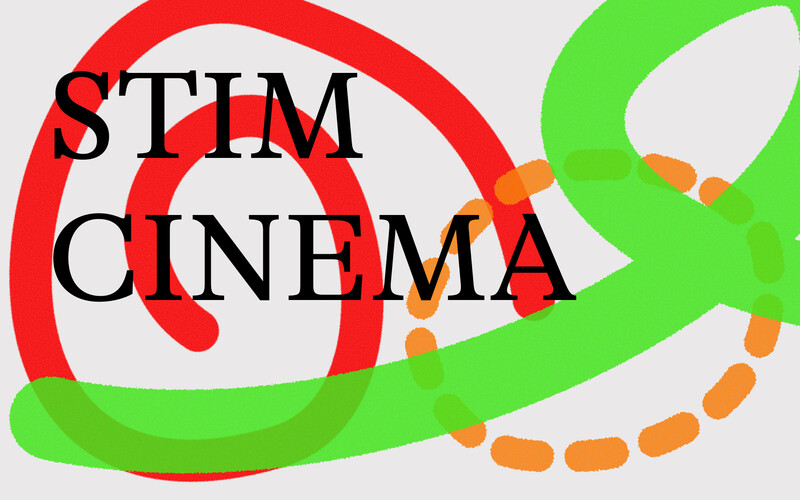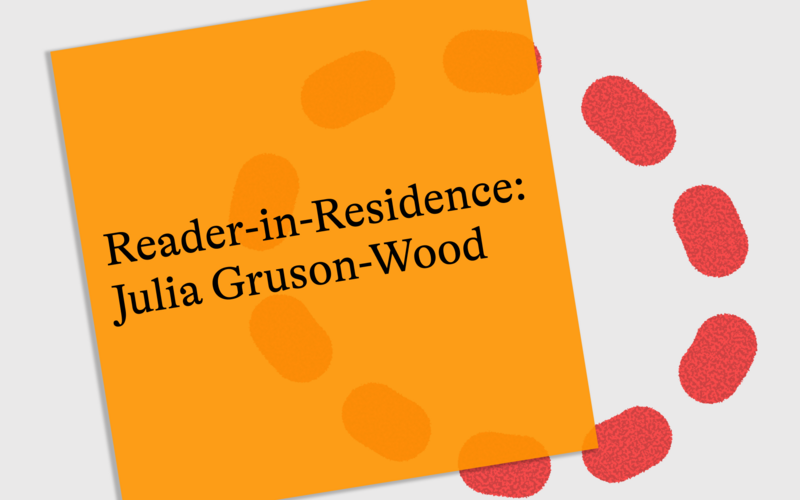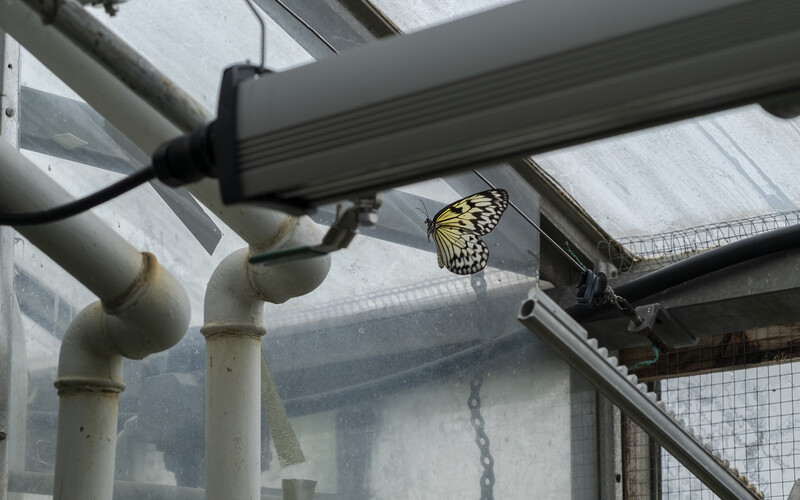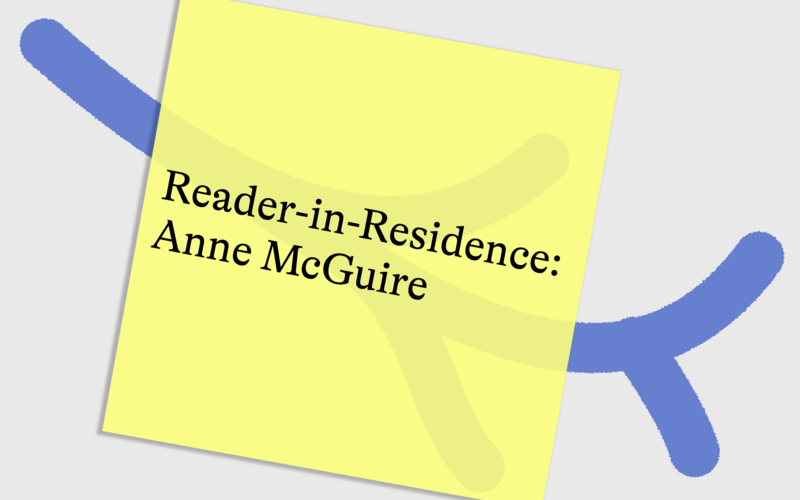The Blackwood is seeking submissions from Art & Art History students to participate in the 2026 Art & Art History Graduating Students’ Exhibition. Submission deadline: January 12, 2026. 11:59pm. Please click here for more details.
- Info
How to Read the Reader
- Nov 10, 2025
Annotating STIM CINEMA
- Oct 28, 2025
STIM CINEMA: Renewing Embodied Vocabularies
- May 28, 2025
Learning Otherwise: Embodiment, Language, and Crip Temporalities in RA Walden’s Practice
- Feb 14, 2025
The Agency of Walking
- Jan 21, 2025
Groundwater
- Jun 25, 2024
QUIET PARADE: Precedent Projects
- Jun 18, 2024
Unearthing Stories: Tracy Qiu on Decolonizing Plant Narratives
- May 27, 2024
Resources and Research: Overseeding
- Mar 28, 2024
The Blackwood Index on Campus
- Feb 26, 2024
Building Interrelationships through Interpretive Text
- Feb 07, 2024
Listening is Our Ongoing Score
- Dec 06, 2023
To resist, to empower, to heal
- Nov 20, 2023
Queer Orientations for Future Worldmaking
- Nov 02, 2023
“The sex ed we have as teenagers is precarious”: A timely conversation between Lorena Wolffer and Kira Sosa Wolffer
- Oct 27, 2023
Readings and Resources on Palestine
- Oct 20, 2023
Difficult Art
- Jul 13, 2023
Gestures Toward the Miraculous: A Q&A with Erika DeFreitas
- Jul 06, 2023
“A toast! to you”: Create Your Own Meal of Choices
- May 30, 2023
Sense Encounters
- May 16, 2023
What brings you here? SDUK Readership Survey
- More…
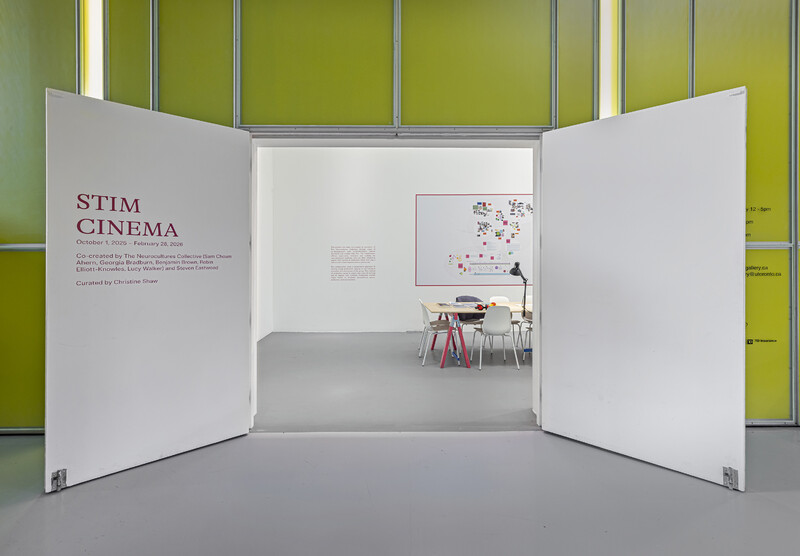
Accompanying STIM CINEMA, the gallery has prepared supplementary materials to accompany publics through concepts, conversations, and urgencies pertaining to neurodiverse experiences and ways of being in the world. This pool of resources seeks to provide a breadth of entry points into the exhibition and its themes, by taking up a diverse set of sensory registers, pedagogical strategies, and pragmatic forms. These resources are found across both galleries, and digital copies are available on the STIM CINEMA program page. This post highlights select resources:
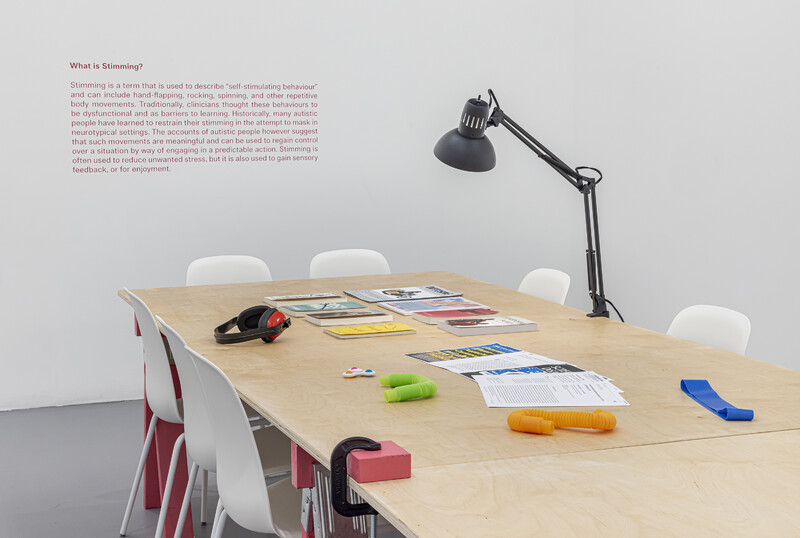
Descriptive Audio Guide (Online)
Offered as both an audio recording and a written transcript, the descriptive guide navigates the exhibition design and context to add texture to visitors’ experiences of the installation. Additionally, the guide provides important wayfinding information for publics to follow before or when visiting the galleries at UTM.
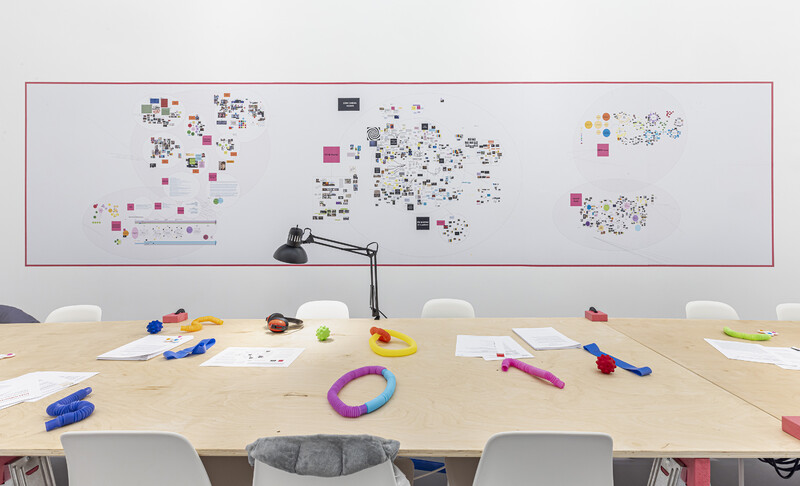
Mind Map Interpretive Guide (In-Gallery/Online)
Found on the tabletops in the e|gallery, this interpretive guide serves to pull at conceptual threads, and tease out key themes from the Neurocultures Collective’s nebulous mural. Rather than dictating audiences’ interpretations, the guide pulls focus on the moments of nested wondering and critical inquiry within the expansive composition, to hatch new understandings of cinema’s relationship to neurodivergent experience, and representations of Autistic being in the world. One line on the mural asks: “[what] if the camera was Autistic?”; another annotation reads: “applause is stimming.”
Co-Creation Studio Bibliography (In-Gallery/Online)
As an extension of the co-working methods and illustrated sprawl of ideas mounted in the Co-Creation Studio, the Blackwood has prepared a bibliography to patch additional voices into the conversations convened by STIM CINEMA. Ranging from academic journals, and sharply written critical texts such as Pooja Rangan, The Documentary Audit: Listening and the Limits of Accountability (2025), to alternative presses developing collective, publication strategies found in the sampling of texts from the Re • Storying Autism Writing Collective, and poems from the Multiverse Series. This resource accepts the invitation to collaborate, in thought, with the Neurocultures Collective, using the bibliography as a critical, connective tissue that brings together diverse formats, genres, and voices.1 Each of the texts catalogued in the bibliography can be found in the Co-Creation Studio.
Take-Home Materials: Video Transcript and Audio Description, and Micropublication (In-Gallery/Online)
The exhibition continues to circulate and remain accessible through take-home ephemera: STIM CINEMA’s film transcript, and the exhibition’s micropublication.
The film transcript, printed on tabloid-sized paper, is found in a stack adjacent to the video installation in the Blackwood Gallery. It reproduces the film’s dialogue, and parses out subtleties within the work’s score. In place of open captions, this resource serves as both an extension of access for D/deaf publics, as well as means to further engage in, and revisit the moving-image work of The Neurocultures Collective.
The micropublication hosts Christine Shaw’s curatorial text, which assembles the exhibition’s conceptual framework, and offers insights into the curatorial strategies which inform the exhibition design. Throughout, the publication reproduces block quotes from adjacent writers to share foundational discourses in neurodivergent and critical disability studies. Additionally, the micropublication prepares audiences for responsive programming—such as the Reader-in-Residence series and forthcoming OUGHTISM seminar. This resource is available both in large-print and standard format online and in print.
Supports and Services for Neurodivergent Students (In-Gallery/Online)
This resource lists community services and systems of support organized locally, provincially, and at the University. Whether it be sources for alternative pedagogy and education, or seeking accommodations, this document offers impactful starting points for interested readers.
SDUK Broadsheet
- SDUK Broadsheet
- 15
- 14
- 13
- 12
- 11
- 10
- 9
- 8
- 7.2
- 7.1
- 6
- 5
- 4
- 3
- 2
- 1
- 0
SDUK15: CONFIDING
This milestone fifteenth issue, CONFIDING, addresses trust and collaboration: the tools, methods, and strategies collaborators use to build mutual confidence while working together. With an international slate of largely co-authored contributions, this issue models forms of experimental and collaborative authorship through letters, exercises, interviews, oral histories, and more.
Contributors: Tasha Beeds, Elspeth Brown, Quill Christie-Peters, Tonatiuh López, Performance RAR (Agung Eko Sutrisno, Muhammad Gerly, Agesna Johdan, Bagong Julianto), The Post Film Collective (Marcus Bergner, Sawsan Maher, Mirra Markhaëva, Robin Vanbesien, Elli Vassalou), Vania Gonzalvez Rodriguez, Heather Kai Smith, Alisha Stranges, Michelle Sylliboy, quori theodor, Ilya Vidrin, Jess Watkin

The Blackwood
University of Toronto Mississauga
3359 Mississauga Road
Mississauga, ON L5L 1C6
[email protected]
(905) 828-3789
The galleries are open. Hours of operation: Monday–Saturday, 12–5pm.
Facebook | Twitter | Instagram
Sign up to receive our newsletter.
The Blackwood is situated on the Territory of the Mississaugas of the Credit, Seneca, and Huron-Wendat.
